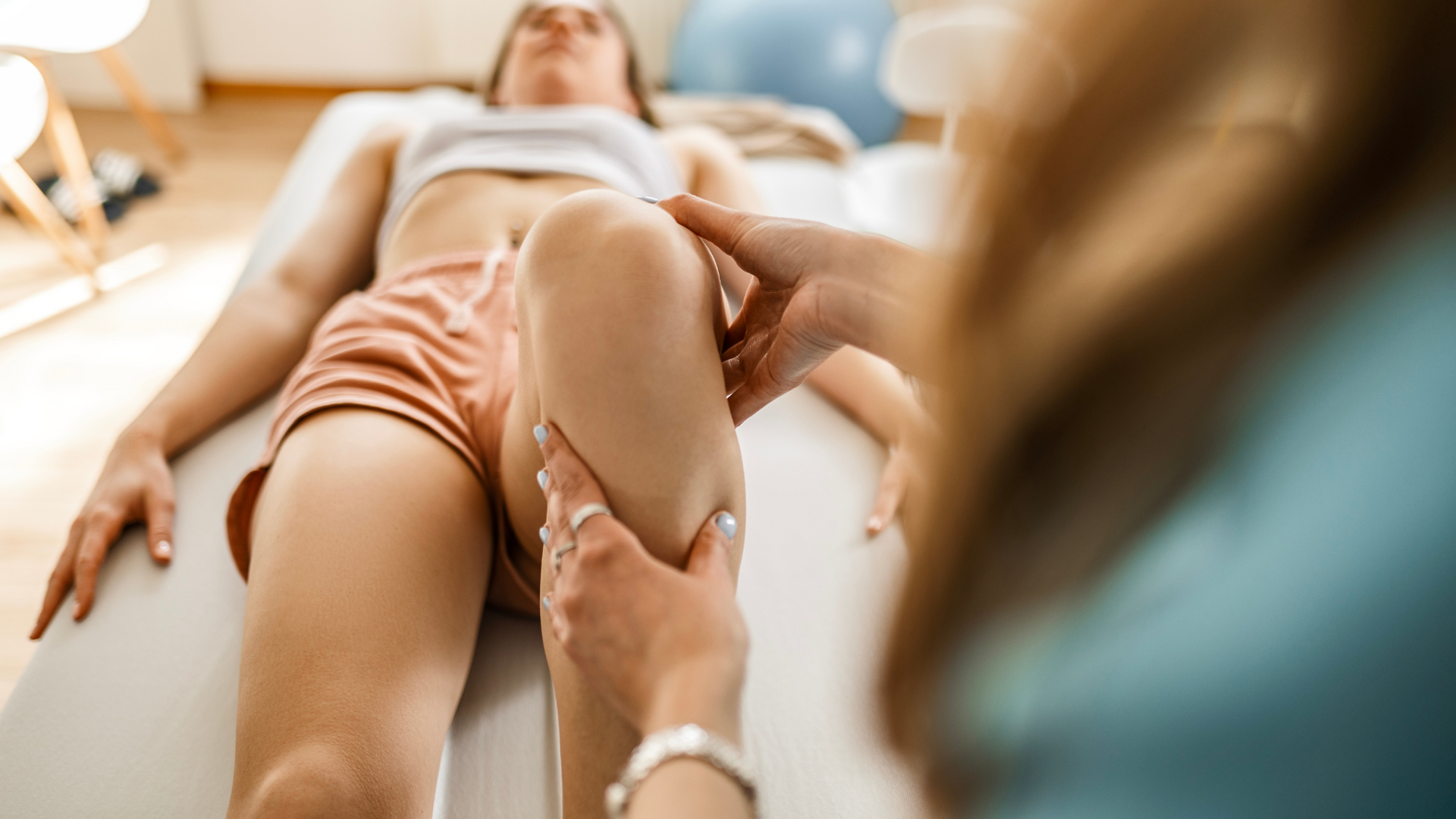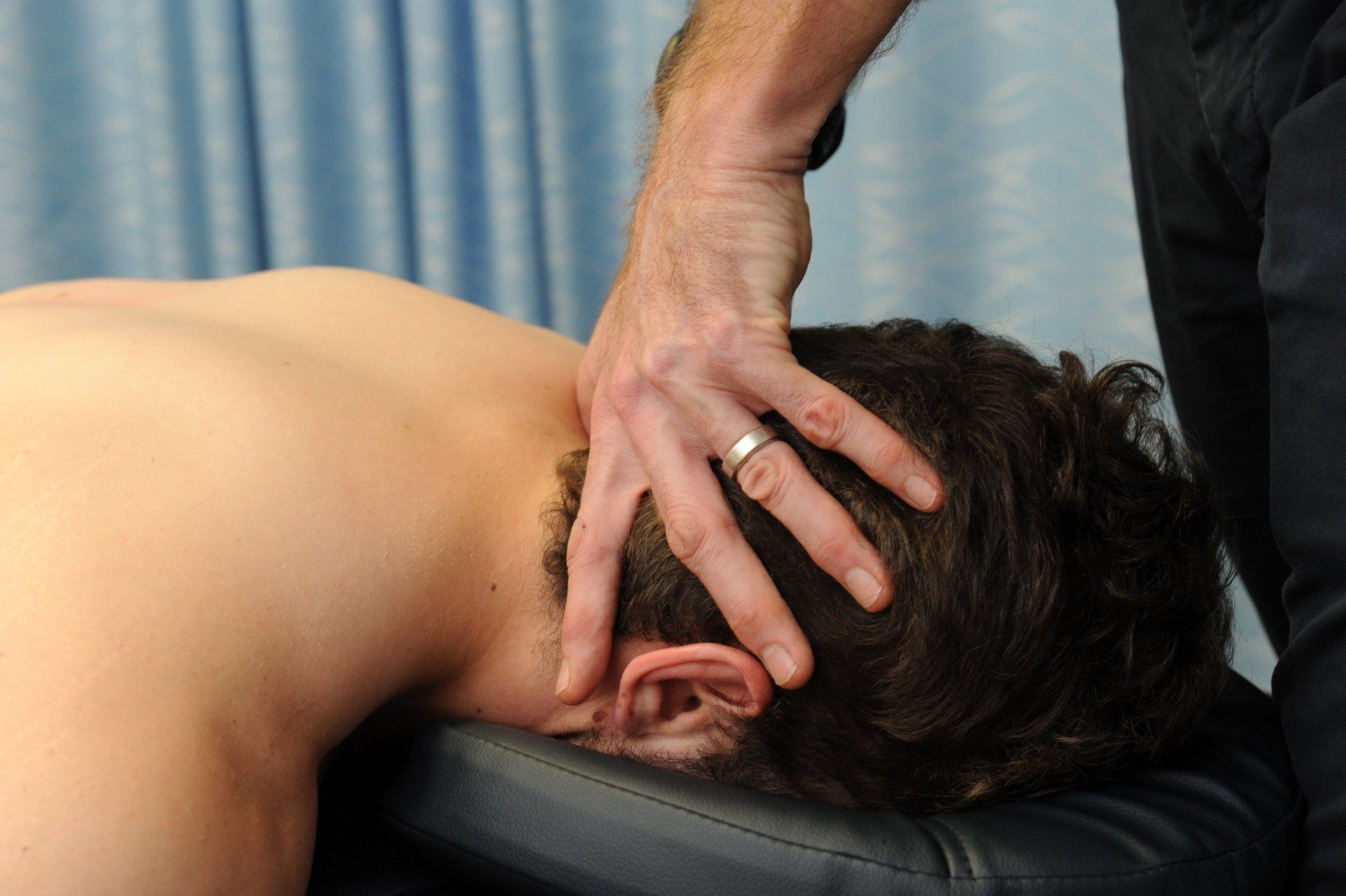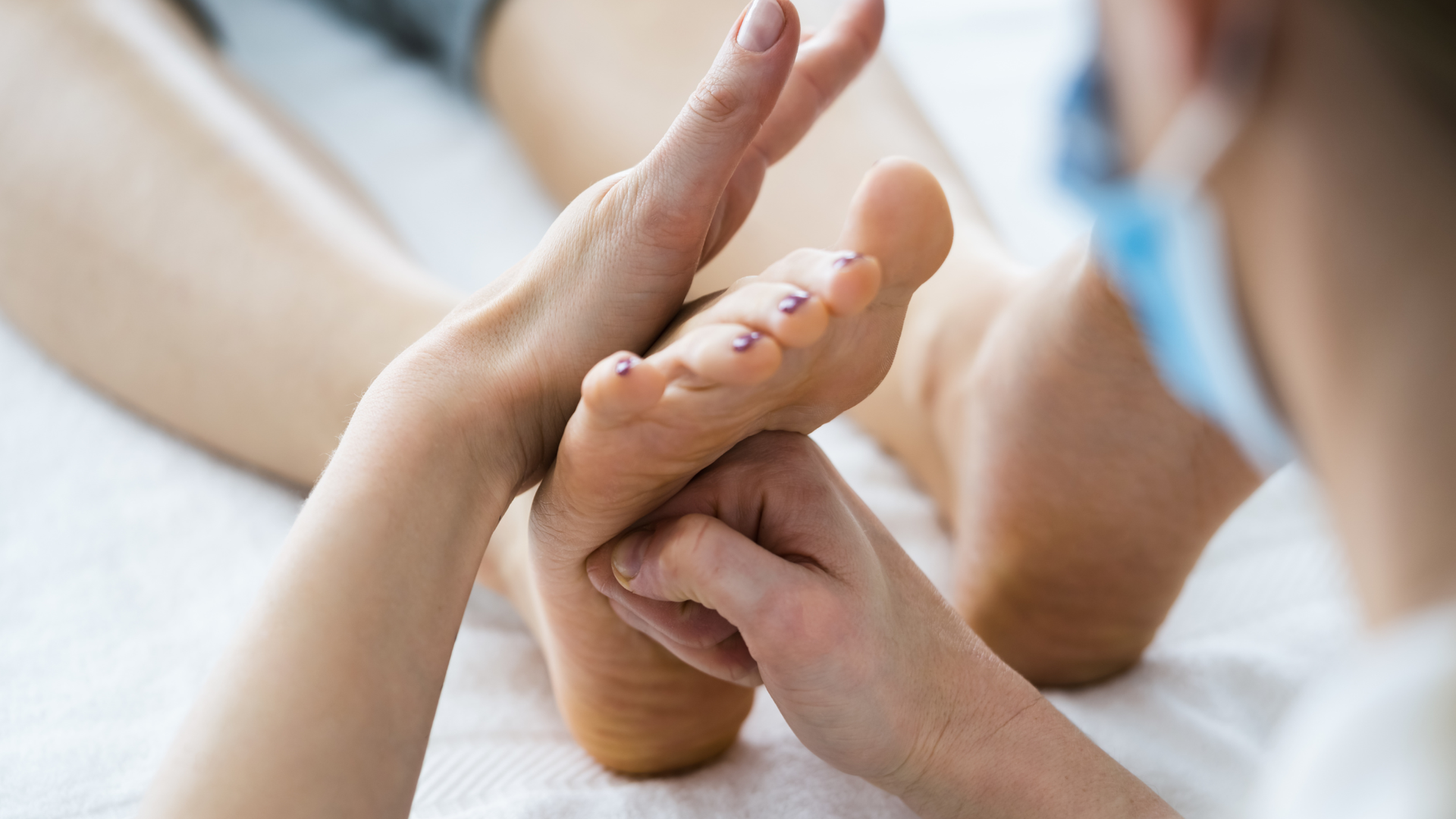Heel Pain - Achilles Tendon Tear
Achilles tendon ruptures are complex and need skilled management.

Few musculoskeletal injuries are quite as acutely incapacitating and devastating as a rupture of the Achilles tendon. Capable of withstanding up to eight times our body weight in force, the Achilles tendon (AT) is the largest and strongest tendon in the human body. But it is not infallible. Ruptures occur when the load bearing capacity of the tendon is exceeded, resulting in tendon failure, significant pain, and loss of function.
A little bit of anatomy
The Achilles tendon is a thick, strong band of connective tissue that connects the calf muscles (the gastrocnemius and soleus) to the heel bone. It is the largest and strongest tendon in the body and is responsible for transmitting forces generated by the calf muscles to the foot and ankle, allowing us to walk, run, jump, and stand on tiptoes.
An Achilles tendon rupture is a complete or partial tear of the tendon that results from sudden or excessive force, such as during a rapid change of direction, jumping, or pushing off forcefully to start a sprint. In the presence of tendon overuse or degeneration, as occurs in older populations, the force required to rupture the tendon may be much lower.
When an Achilles tendon rupture occurs, the collagen fibers in the tendon tear, causing a loss of continuity between the calf muscles and the heel bone. This can result in pain, swelling, bruising, and difficulty with walking or standing on tiptoe. In severe cases, the rupture may be visible and palpable as a gap in the tendon.
Risk factors for Achilles tendon tears
The risk factors for Achilles tendon rupture are multi-factorial. While it can occur in people of all ages and activity levels, AT tears are more common in men and typically affect individuals who engage in sports or physical activities that require a lot of jumping and sudden changes in direction. Incidence of injury has increased in 30 years due to higher athletic and ageing populations.
Acute ruptures account for 68% of injuries and are more common in sports people where high levels of
stress are placed on the tendon - sports such as badminton, soccer, volleyball, basketball, tennis and squash.
Other risk factors for Achilles tendon rupture include obesity, smoking, comorbidities such as rheumatoid arthritis and systemic lupus erythematosus, and the use of some commonly prescribed medications such as fluoroquinolone and steroids. Poor running mechanics and altered biomechanics such as high arch, flat foot, and leg length discrepancy can increase the risk of injury.
Diagnosing Achilles Tendon Rupture
The signs and symptoms of an Achilles tendon rupture can vary depending on the severity of the injury. Most people report sudden and severe pain in the back of the ankle or calf, like they have been struck by a stone. This pain can feel like a sharp or stabbing sensation and may be accompanied by a popping or snapping sound.
In most instances people have trouble walking or standing on tiptoe. This may be accompanied by an inability to plantarflex (point) the foot and some restriction in ankle range of movement. Swelling and bruising can develop quickly and be accompanied by ankle stiffness and pain.
There are some special tests that the physiotherapist can perform to help rule in or rule out an Achilles tendon rupture. A thorough physical examination will consider other possible conditions that can cause similar symptoms to a tendon injury such as:
- Calf muscle strain or rupture
- Ankle Sprain
- Achilles Tendinopathy
- Lower leg fracture
- Deep Vein Thrombosis (DVT)
- Nerve injury
- Plantaris tendon rupture
Do I need a scan?
Qualified health care professionals including physiotherapists can normally diagnose an Achilles tendon rupture clinically, without the need for further investigations. In some cases, particularly if a partial tear is suspected, or if surgery is being considered, ultrasound and/or MRI can prove beneficial in the management of an Achilles injury. Your physiotherapist can help you to make an informed decision on the need for a scan.
Management of Achilles Tendon Rupture
The management of Achilles tendon rupture depends on the severity of the injury, the age of the patient, co-morbidities, and individual objectives such as a desire to return to sport.
Both non-surgical and surgical options are applicable with an Achilles tendon rupture.
Surgery has been shown to reduce the risk of a re-injury but carries with it an increased cost and increased risk of scar adhesions, loss of sensation, deep vein thrombosis (DVT), and infection. Surgery may be recommended for more severe injury or for patients who are physically active and require a quicker return to activities. Surgery involves reattaching the torn ends of the tendon, often using sutures or anchors, and may require a period of immobilization followed by intensive physiotherapy.
Non-surgical treatment options may include immobilization of the affected leg in a cast or walking boot, physiotherapy, and anti-inflammatory medications to reduce pain and swelling. This option has been shown to have similar outcomes in the long term particularly when coupled with accelerated functional rehabilitation.
Regardless of the treatment approach, rehabilitation and physiotherapy are essential for a successful recovery from an Achilles tendon rupture. Physiotherapy typically focuses on:
- Reducing residual pain and swelling
- Restoring ankle dorsiflexion while protecting the healing tissue
- Strengthening the calf and Achilles tendon
- Improving the strength and coordination of the lower limb
- Providing a safe and competitive return to sport
How long’s it going to take?
The recovery time for an Achilles tendon rupture can vary depending on the severity of the injury and the treatment approach. Treated conservatively (ie. non-surgically), management usually involves immobilization in an equinas cast or walking boot for 6-12 weeks, with a further 6-12 weeks required to achieve return to sport (so around 5-6 months from date of injury).
Managed surgically, the patient will still require a walking boot that is gradually adjusted to allow stretch to be applied to the healing tendon. This is generally required for at least 6 weeks followed by 8-12 weeks of rehabilitation to achieve return to sport (so around 4 months).
It is important to note that every person is different and may have unique circumstances that can affect the recovery timeline. Factors that can impact recovery time include age, overall health, and the severity of the injury. Additionally, following a rehabilitation program and adhering to a health professional such as physiotherapist recommendations for activity restrictions and exercise can help ensure the best possible outcome and reduce the risk of reinjury.
The Take Home
Achilles Tendon rupture is a common injury that can result in pain, weakness, and affect activities of daily living and sport. Diagnosis can be made by a physiotherapist, and treatment guided dependent on the individual person’s injury severity, age, co-morbidities and personal goals. Throughout the rehabilitation journey for an Achilles tendon rupture, physiotherapy is a key component of your recovery and return to work, sport and daily activities.
Got an Achilles tendon problem and want to get it sorted? Give us a call now.
At Movement for Life Physiotherapy, we can assess and diagnose the cause of your heel pain and let you know whether you have torn your Achilles, have a bursitis or tendinopathy, or if there is something else going on. With a clear diagnosis and tailored management plan, we'll help get you back to the things you love sooner.
Give us a call now or click on BOOK AN APPOINTMENT to book online.
Sources
- Aujla, R., Patel, S., Jones, A., Bhatia, M. Non-operative functional treatment for acute Achilles tendon ruptures: The Leicester Achilles Management Protocol (LAMP). Injury. (2019), 50(4), 995-999. https://doi.org/10.1016/j.injury.2019.03.007
- Maffuli, N., Peretti, G. M. (2019). Surgery or conservative management for Achilles tendon rupture? TheBMJ;364:k5344 doi: 10.1136/bmj.k5344
- Massen, F. K., Shoap, S., Vosseller, J. T., Fan, W., Usseglio, J., Boecker, W., ... & Polzer, H. (2022). Rehabilitation following operative treatment of acute Achilles tendon ruptures: a systematic review and meta-analysis. EFORT Open Reviews, 7(10), 680.
- Strom, A. C., & Casillas, M. M. (2009). Achilles tendon rehabilitation. Foot and ankle clinics, 14(4), 773-782.
- Tarantino D, Palermi S, Sirico F, Corrado B. Achilles Tendon Rupture: Mechanisms of Injury, Principles of Rehabilitation and Return to Play. Journal of Functional Morphology and Kinesiology. 2020; 5(4):95. https://doi.org/10.3390/jfmk5040095
- Touzell, A. (2020). The Achilles tendon: Management of acute and chronic conditions, Australian Journal of General Practice. 49(11). doi: 10.31128/AJGP-07-20-5506
- Utashima, D., Matsumura,N., Suzuki, T., Iwamoto, T., Ogawa, K. Clinical Results of Surgical Resection and Histopathological Evaluation of Synovial Chondromatosis in the Shoulder: A Retrospective Study and Literature Review. (2020). Clinics in Orthopedic Surgery. 12:68-75.
https://doi.org/10.4055/cios.2020.12.1.68








